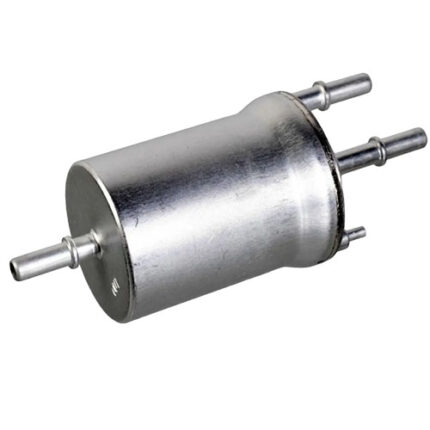-22%
Get Rear Engine Mount AUDI Q3 8U 2015-2018/Q3 Quattro/Passat CC/Tiguan 2009-2017/VW CC 2009-2015 3C0199855M
The engine mount is a fundamental component in a vehicle’s engine and drivetrain system. Its primary role is to secure the engine to the vehicle’s chassis while isolating vibrations and reducing noise. Understanding the functionality, types, symptoms of failure, and maintenance of engine mounts is crucial for ensuring optimal vehicle performance and longevity.
Functionality of the Engine Mount
Engine mounts serve several critical functions:
- Secure Engine Placement: The engine mount anchors the engine to the vehicle’s chassis, ensuring it remains in a fixed position during operation.
- Vibration Isolation: Engine mounts absorb and isolate vibrations generated by the engine, preventing them from being transmitted to the passenger compartment and improving ride comfort.
- Noise Reduction: By dampening engine vibrations, the mount helps reduce noise, contributing to a quieter cabin environment.
- Engine Alignment: The mount helps maintain proper engine alignment with the transmission and drivetrain components, ensuring efficient power transfer and smooth operation.
Components of an Engine Mount
A typical engine mount consists of the following components:
- Mount Bracket: The metal bracket that attaches the engine to the vehicle’s chassis. It provides structural support and stability.
- Rubber or Polyurethane Isolator: The isolator absorbs vibrations and provides flexibility. Rubber is commonly used for its effective damping properties, while polyurethane is used in performance applications for its durability.
- Fasteners: Bolts and nuts secure the mount bracket to both the engine and the chassis.
Types of Engine Mounts
Engine mounts come in various types, each suited to different vehicle requirements and performance needs:
- Standard Rubber Mounts: These are the most common type, providing effective vibration isolation and noise reduction. They are typically used in everyday passenger vehicles.
- Hydraulic Mounts: These mounts use hydraulic fluid to dampen vibrations, offering superior noise reduction and ride comfort. They are often used in luxury and high-performance vehicles.
- Polyurethane Mounts: Known for their durability and resistance to wear, polyurethane mounts are used in performance and off-road vehicles. They provide better handling characteristics but may transmit more vibrations to the cabin.
- Solid Mounts: These mounts have no damping material and are used in racing applications where maximum rigidity and power transfer are required. They offer no vibration isolation, making them unsuitable for regular street use.
Symptoms of a Failing Engine Mount
Recognizing the signs of a failing engine mount is crucial for maintaining vehicle performance and safety:
- Excessive Engine Vibration: Increased vibrations felt in the cabin, particularly during acceleration or idle, can indicate a worn or damaged engine mount.
- Engine Movement: Visible movement or shifting of the engine, especially during acceleration or braking, can be a sign of a failing mount.
- Unusual Noises: Clunking, banging, or rattling noises coming from the engine bay can indicate that the mount is damaged or loose.
- Poor Handling: A failing engine mount can affect the vehicle’s handling, making it feel less stable or more prone to unwanted movements.
- Visible Damage: Inspecting the mount for visible signs of wear, such as cracked or torn rubber, can indicate the need for replacement.
Causes of Engine Mount Failure
Several factors can contribute to engine mount failure:
- Wear and Tear: Over time, the constant stress and exposure to engine heat can cause the rubber or polyurethane isolator to deteriorate.
- Harsh Driving Conditions: Aggressive driving, off-roading, or frequent acceleration and braking can put additional stress on the engine mounts, leading to accelerated wear.
- Fluid Leaks: Leaks from the engine or transmission can degrade the rubber isolator, causing it to weaken and fail.
- Corrosion: Exposure to moisture, road salt, and other corrosive elements can cause the metal components of the mount to rust and weaken.
Maintenance and Replacement
Proper maintenance of engine mounts involves regular inspections and timely replacements to ensure optimal vehicle performance and safety:
- Regular Inspections: Periodically check the engine mounts for signs of wear, damage, or fluid leaks. This can be done during routine vehicle maintenance or when other engine components are serviced.
- Monitor Symptoms: Pay attention to any unusual vibrations, noises, or handling issues that may indicate a problem with the engine mounts.
- Replace as Needed: If any symptoms of a failing engine mount are observed, replace the mount promptly to prevent further damage to the engine and drivetrain components.
Replacement Process
Replacing an engine mount typically involves the following steps:
- Prepare the Vehicle: Park the vehicle on a level surface and lift it securely using a jack and jack stands. Ensure the engine is properly supported.
- Locate the Engine Mounts: Identify the location of the engine mounts. They are usually positioned at the front, rear, and sides of the engine.
- Remove the Old Mounts: Carefully unbolt and remove the old engine mounts. You may need to support the engine with a jack or engine hoist while removing the mounts.
- Install the New Mounts: Position the new engine mounts and secure them to the engine and chassis using the appropriate fasteners. Ensure they are properly aligned and tightened to the manufacturer’s specifications.
- Lower the Vehicle: Carefully lower the vehicle and remove the jack stands.
- Test the Vehicle: Start the vehicle and check for any unusual vibrations or noises. Take the vehicle for a test drive to ensure smooth operation and proper handling.
Importance of Quality Engine Mounts
Using high-quality engine mounts is essential for several reasons:
- Performance: Quality mounts ensure effective vibration isolation and noise reduction, contributing to a smoother and more comfortable ride.
- Durability: High-quality materials and construction enhance the mount’s longevity, reducing the frequency of replacements.
- Reliability: Reliable mounts maintain proper engine alignment, ensuring efficient power transfer and smooth operation.
- Cost-Effectiveness: Investing in quality mounts can prevent frequent replacements and associated labor costs.
Follow us on Facebook for more parts.



